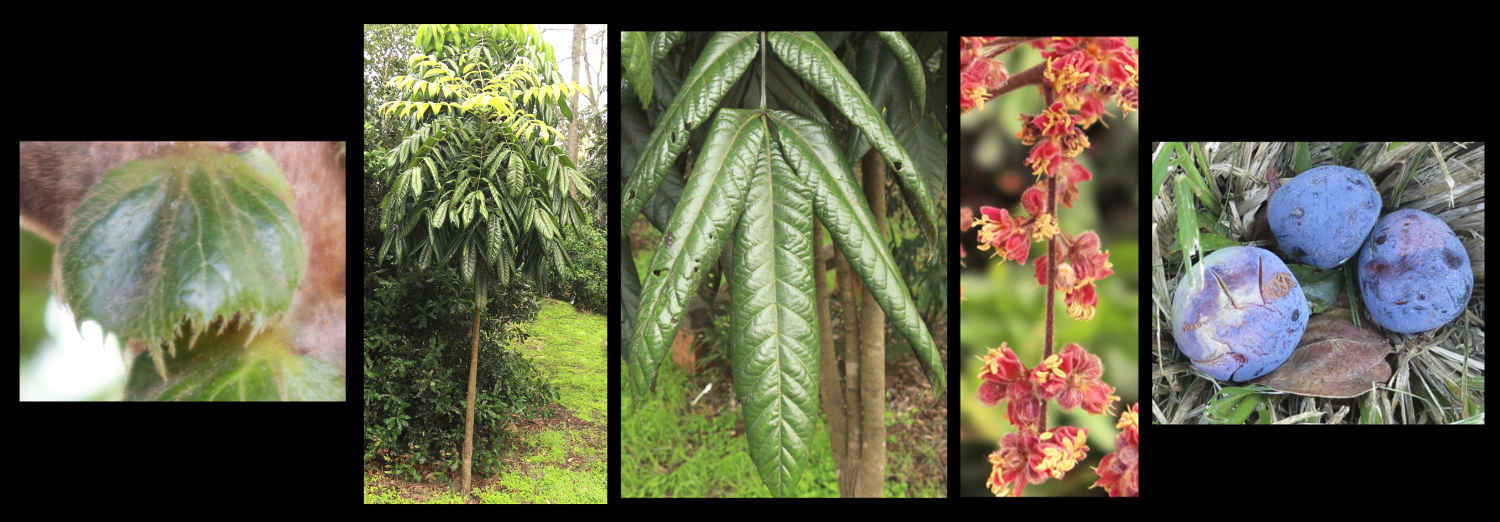Davidsonia.
It is sometimes seen as the sole genus in its own family Davidsoniaceae.
There are 3 similar species – D. pruriens, D. jerseyana and D. johnsonii.
It is uncertain if there is a fourth species and some varieties are described.
The trees, from 4 m in the open up to 12 or 15 m have a thin trunk.
The brown bark has large scars from old leaf bases and the leaves form a dense crown at the top.
New leaves may be pink and young leaves may have dense hairs.
There are large hairy widely ovate to kidney-shaped stipules with a toothed edge.
The pinnate leaves, alternately arranged in a spiral are up to around 1 m long.
On a petiole up to 20 cm long there are 5 to 17 leaflets up to 30 cm long and 10 cm wide.
Leaflets are on petiolules a few mms long.
The terminal leaflet is usually larger than the laterals with a longer petiolule.
The petiole and midrib have small green wings with teeth that have hairs on the edge.
The underside of the petiole and midrib may have a few soft hairs or dense long and short ones.
The oblong or obovate leaflets have irregular teeth on the edge.
The upper surface may have a few short hairs or none.
The lower surface has few hairs or a mix of long and short pale brown hairs especially
along the midrib and veins. Hairs may be soft or stiff and prickly.
Inflorescences are long branched clusters (panicles) in the leaf axils or on the bare trunk.
The small bisexual and bilaterally symmetric flowers are under 10 mm across.
The sepals form a tubular calyx with 4 (5) lobes about the same length as the tube.
It is a reddish-pink and has dense hairs.
There are no petals.
There are 8 or 10 free stamens in 2 whorls that alternate with the nectary glands.
The dorsifixed anthers open inwards through pores that become short or long slits.
The hairy superior ovary, of 2 fused carpels has 2 locules each with a few ovules.
The 2 apical styles, with small stigmas extend well past the sepals.
The fleshy fruit resemble plums with a dark blackish-blue to purple skin and deep red flesh.
Around 4 to 5 cm long and 5 to 6 cm wide they may have fine hairs.
They are drupe-like having 1 or 2 flattened pyrenes (stones) each with 1 flat seed.
J.F.


